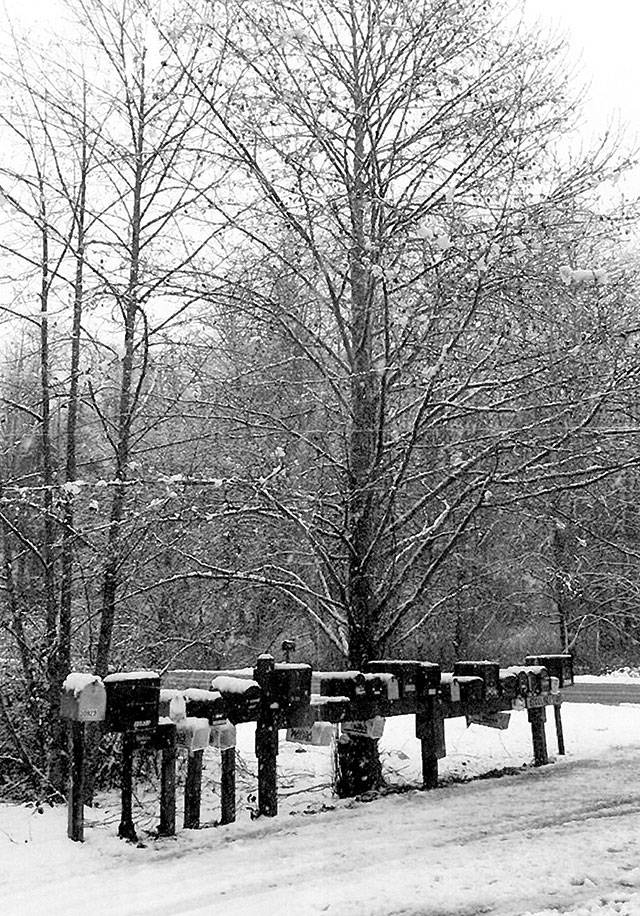By The Herald Editorial Board
The most ordinary things in our daily lives can come to hold great significance.
The collection of mailboxes and newspaper tubes that stood together outside the Steelhead Haven neighborhood was a gathering spot for the residents who lived along the North Fork Stillaguamish River and Highway 530 between Oso and Darrington.
Neighbors could gather or catch each other coming and going, as they picked up mail and the daily paper, exchanging hellos, news or a friendly wave.
That gathering spot was lost along with 43 lives and 36 homes in the March 22, 2014, landslide that swept through the neighborhood, severed the highway and changed the lives of Stillaguamish Valley residents.
A new gathering spot, marking the five years since the landslide, provides an apt memorial to the lives that were lost and a commemoration of the lives that were changed.
At a larger memorial park that is being developed within 13 acres of Snohomish County land at the site of the landslide, metal sculptor Louise McDowell has recreated the lineup of mailboxes, which will serve as a welcome to the memorial, just as the original mailboxes marked the entrance to Steelhead Haven.
In addition to the memorial site, for which organizers are hoping to raise $6 million — including $3.5 million from the state Legislature’s capital budget — the state’s transportation commission last month renamed a 23-mile stretch of Highway 530 as the Oso Slide Memorial Highway. The highway will be marked with signs using that name and include the time and date of the landslide and the number 43.
Since the highway’s reopening three years after the slide, the drive past the slide area invites quiet — if not silent — reflection. The highway signs will encourage that reflection even as the land slowly changes with the seasons and the geologic scars fade over time.
Such memorials and commemorations are necessary, but other efforts have filled the last five years. That work, too, honors the memories of those who died and the resilience of the valley’s residents who are continuing the work to rebuild their communities. And there’s ongoing work to learn from a natural disaster that can make other communities in the state, nation and world safer:
Elsewhere in today’s Herald, state Public Lands Commission Hilary Franz details the efforts of the Department of Natural Resources and other state agencies to better direct emergency response for natural disasters in the state and learn more about landslides, by mapping the state’s geology to identify potential hazards and share that information to protect communities.
The SR530 Landslide Commission — a panel of first-responders, emergency planners, state and local officials, scientists and others — outlined the lessons learned and made recommendations regarding the emergency response and recovery efforts.
The Economic Alliance Snohomish County worked with federal, state and local governments and agencies to develop an economic redevelopment plan for the North Stillaguamish Valley that recommended projects and efforts to develop infrastructure, create and attract employers, develop workforce opportunities, encourage tourism and promote sustainable development.
That plan helped attract millions of dollars in support that launched numerous projects, including Glacier Peak Institute to promote STEM education in the valley; develop new wood products and markets to promote the timber and mill industry; create and develop the 4,000-acre Arlington-Marysville Manufacturing Industrial Center; reopen the 27-mile bike and pedestrian Whitehorse Trail between Arlington and Darrington; and consideration of paving of the Mountain Loop Highway.
Such efforts to honor memories, rebuild communities and learn from disasters are not unique to the Stillaguamish Valley and its communities, of course.
They are common to the disasters that came before, such as Hurricane Sandy in 2012; those that came after, such as the Camp Fire that devastated the town of Paradise, California, last year; and those where communities still are counting the costs and the lives lost and changed, such as this month’s tornadoes in the Southeast and this week’s record flooding in the Midwest.
These disasters are specific — and often personal — in what they take from families and communities. What is shared by all is a common resolve to reach out and remember, pick up the pieces and rebuild.
Five years on, that work continues in the Stillaguamish Valley and its communities; in something as ordinary as a conversation at a mailbox.
Talk to us
> Give us your news tips.
> Send us a letter to the editor.
> More Herald contact information.

























